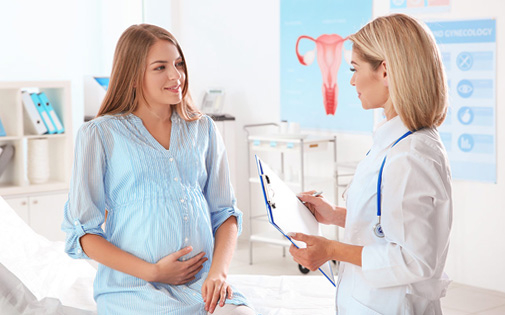For appointment and information, you can rich us on +90532 433 6003(whatsapp)
 Obstetrician, Gynecologist, Genital Esthetic Surgeon in Turkey
Obstetrician, Gynecologist, Genital Esthetic Surgeon in TurkeyFor appointment and information, you can rich us on +90532 433 6003(whatsapp)
 Obstetrician, Gynecologist, Genital Esthetic Surgeon in Turkey
Obstetrician, Gynecologist, Genital Esthetic Surgeon in TurkeyPerinatology is the term used to describe the follow-up and management of pregnancies that are affected by high risk situations related to the pregnant patient or the fetus.

Perinatology is the term used to describe the follow-up and management of pregnancies that are affected by high risk situations related to the pregnant patient or the fetus.
A high risk pregnacy is a pregnancy that carries higher risk compared to the normal population caused by certain factors related to the pregnant patient or the fetus. Such pregnacies require specialized follow-up and management plans.
Perinatologists are gynecologists who have received extra fellowship training for the management of such high risk pregnancies.
During a preconceptional or prenatal visit, when any any of the following risk factors are detected, the pregnancy is considered as high risk pregnancy.
Maternal High Risk Factors:
Fetal risk factors:
A perinatologist is an obstetrician and gynecologist who has received additional fellowship training for 3 years in the field of perinatology (Maternal-Fetal Medicine). They receive special education in invasive fetal diagnostic and therapeutic procedures, advanced fetal ultrasonography and management of hish risk pregnancies.
A high risk pregnancy can be diagnosed by a detailed history taken from the patient during a preconceptional or antenatal visit. During this visit questions related to the patient’s general health status, family history and past obstetric history (previous pregnancies) should be directed.
It is also possible to detect a high risk pregnancy during pregnancy follow-up by certain examination and tests.
There may be hereditary genetic reasons of high risk pregnancy. Other factors that lead to a high risk pregnancy can be environmental risk factors, maternal chronic diseases,nutritional problems, lack of physical activity ,alcohol, cigarette and drug abuse, exposure to radiation and chemical teratogens.
Some high risk pregnancies may have no symptoms or signs. However a good antenatal follow-up programme may detect most of the high risk pregnancies.
When a pregnant patient experiences any of the following signs and symptoms, she is adviced to apply to her obstetrician:
It is a detailed ultrasound examination performed by a perinatologist usually around 20-22 weeks of gestation to detect congenital fetal malformations.
Several maternal and fetal blood vessels can be examined by a perinatologist using a Doppler ultrasound machine to detect certain high risk conditions.
Obstetric doppler ultrasonography is most commonly used for the detection and follow-up of pregnancies affected by intra uterine growth restriction (IUGR),screening for pregnacies that are at high risk for preeclampsia and IUGR, detection and follow-up of fetal anemia in pregnancies affected Rh isoimmunisation.
Especially for pregnacies that are at high risk for premature labour, serial ultrasound examinations may be performed to measure cervical length, detect cervical opening and funneling.
These are invasive diagnostic tests mostly used to detect fetal congenital genetic disorders. CVS (chorionic villus sampling) is the sampling of placental tissue whereas amniocentesis takes a sample from the amniotic fluid and cordosentesis takes a sample from the umbilical cord blood.
Cordosentesis can also be used for therapeutic purpose when fetal anemia is diagnosed and serial fetal transfusions are necessary in pregnancies affected by RH isoimmunisation.
It is the ultrasound test combined with NST (non-stress test) performed during the third trimester to evalaute fetal well-being. There are five parameters of the test which are:
It is a very sophisticated test used to screen for fetal chromosomal malformations from a sample of maternal blood. It uses advanced technology to discriminate fetal DNA in maternal blood. When there is ahigh risk test result, the patient may be referred to a perinatologist for invasive tests to diagnose chromosomal abnormalities.
Oral blood glucose tolerance test (OGTT) should be offered to all pregnant patients for the screening of gestational diabetes. OGTT should be offered as early as possible during pregnancy to patients who are at high risk for gestational diabetes. Low risk patients can have the test at 24-28th gestational week.
Maternal blood serological screening for HIV, syphilis, Toxoplasma, CMV and Rubella is possible. These infectious agents are responsible for some teratogenic fetal malformations. If there is an active infection detected during pregnancy, the patient shoud be referred to a perinatologist.
High risk pregnancies should ideally be followed up by a perinatologist. Depending on the present risk factor and its severity, the patient may be followed up in the outpatient perinatology clinic or may be hospitalised. Outpatient follow-ups may be as often as twice a week for some high risk cases.
Another task of the perinatologist is to manage the correct timing of delivery and to prepare the neonatal intensive care unit and tertiary center facilities before the baby is born.
Perinatologists (maternal fetal medicine specialists) are qualified to follow up high risk pregnancies.
Maternal age is a risk factor in pregnancy. Pregnancies under 18 and over 35 years of age are considered as high risk.
Pregnacies over 35 years of age are associated with the following risks: